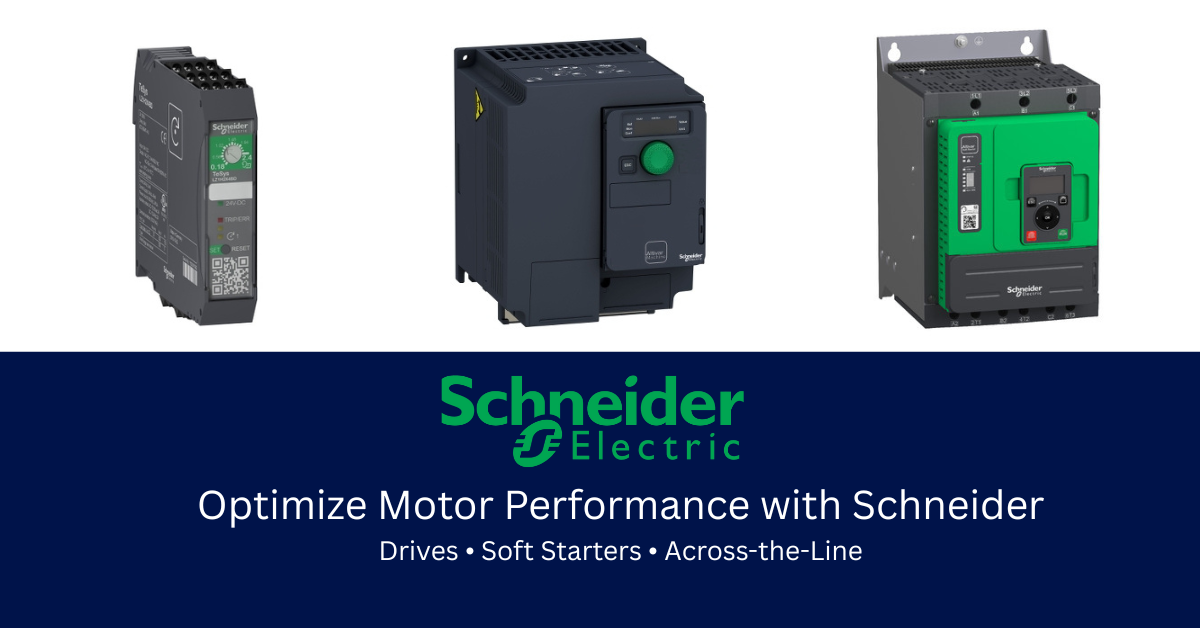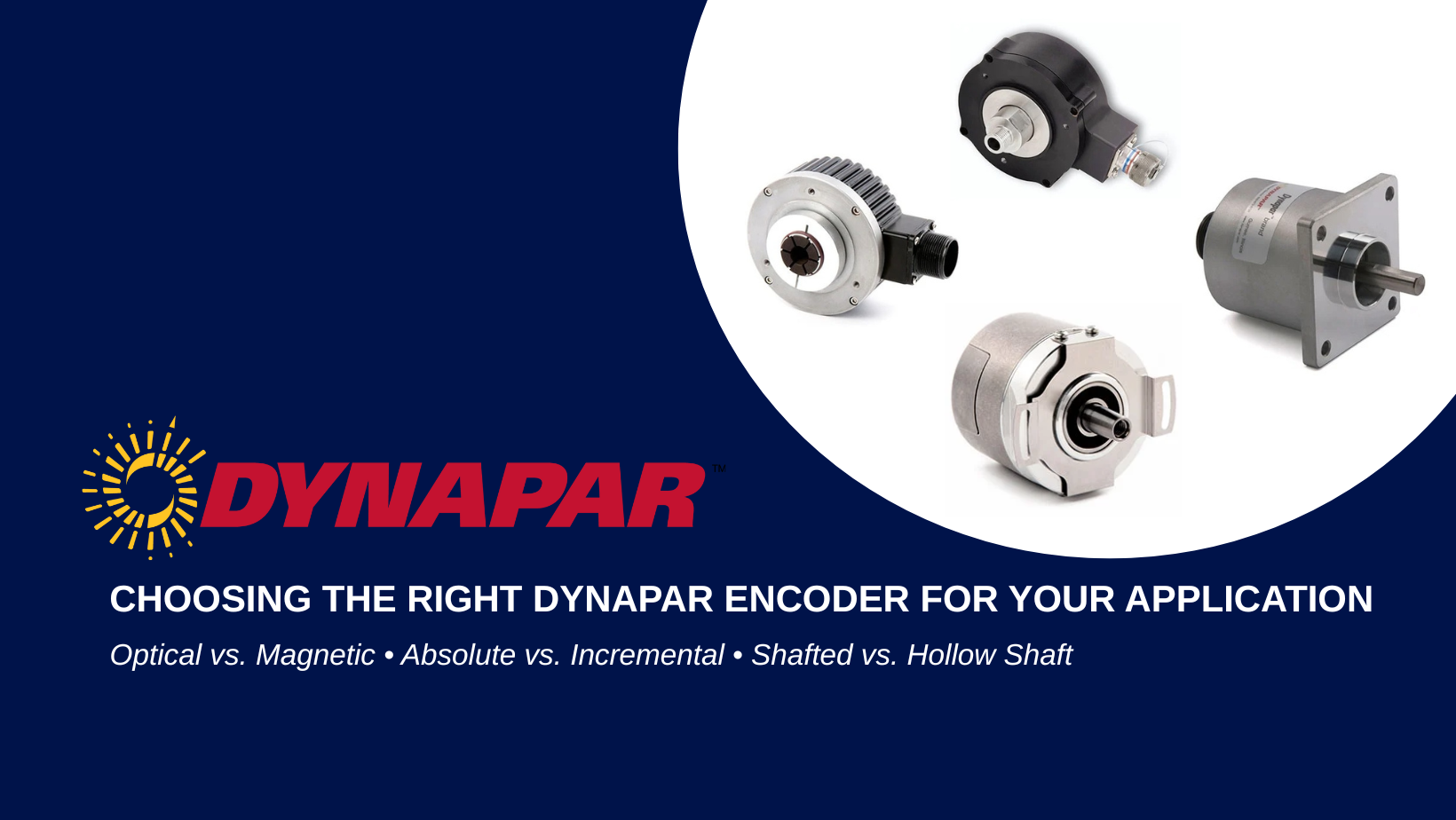
- Product Spotlight
Choosing the Right Dynapar Encoder for Your Application
- By Emily Hagel
When it comes to industrial automation, precision and reliability are non-negotiable. Motion feedback devices like encoders ensure your equipment runs smoothly, accurately, and efficiently. But with so many encoder technologies available, how do you choose the right one for your application?
At Lakeland Engineering, we partner with Dynapar, a global leader in encoders, to provide solutions tailored to each customer’s unique needs. Let’s break down the major encoder options: optical vs. magnetic, absolute vs. incremental, and shafted vs. hollow shaft to help you make an informed decision.
Optical vs. Magnetic Encoders
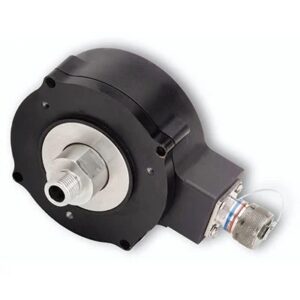
Optical Encoders
How they work: Use a light source and photodetector to sense motion through a coded disk.
Best for: Applications that require high resolution and precision (robotics, medical equipment, precision machining).
Advantages:
Extremely accurate
High resolution (up to thousands of counts per revolution)
Stable performance in clean environments
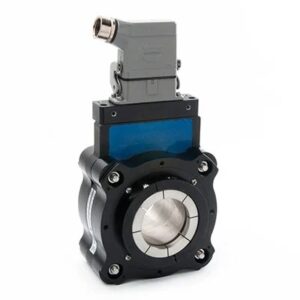
Magnetic Encoders
How they work: Use magnetic fields and sensors to detect movement.
Best for: Harsh or dirty environments (steel mills, mining, food processing, wastewater plants).
Advantages:
Rugged and resistant to dust, dirt, oil, and moisture
Longer lifespan in challenging conditions
Reliable performance where optical encoders may fail
Absolute vs. Incremental Encoders
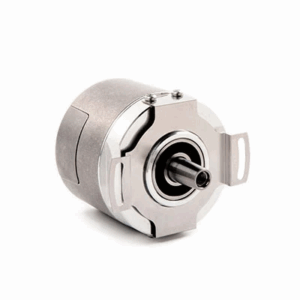
Absolute Encoders
What they do: Provide a unique digital code for every shaft position. Even after a power loss, they “remember” their position.
Best for: Applications where safety, traceability, or precise positioning is critical (e.g., elevators, automated guided vehicles, packaging lines).
Advantages:
No need for homing on startup
Improved accuracy and system reliability
Ideal for complex automation and robotics
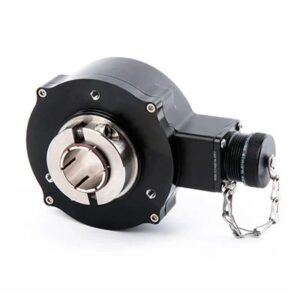
Incremental Encoders
What they do: Generate a stream of pulses to track movement relative to a starting point.
Best for: Applications that need speed or direction feedback (conveyors, pumps, fans, basic automation systems).
Advantages:
Cost-effective and widely available
Simple to install and use
Ideal for real-time monitoring of speed and rotation
Shafted vs. Hollow Shaft Encoders
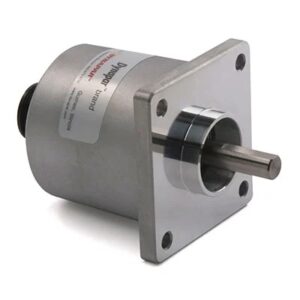
Shafted Encoders
What they are: Encoders with their own shaft, typically mounted with a coupling.
Best for: General-purpose applications where flexibility in mounting is important.
Advantages:
Easy to install
Flexible mounting options
Isolates encoder from mechanical stresses
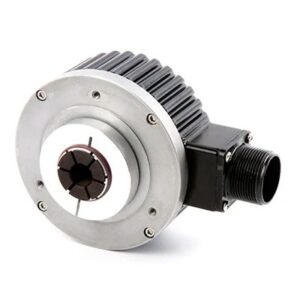
Hallow Shaft Encoders
What they are: Encoders designed to fit directly onto a machine shaft.
Best for: Applications where space is limited or where alignment simplicity is critical.
Advantages:
Compact design
Easy alignment and installation
Reduces mechanical complexity
Making the Right Choice with Lakeland Engineering
No two facilities are the same. The right encoder depends on your environment, performance requirements, and budget.
At Lakeland Engineering, our experts help you:
Evaluate whether optical or magnetic encoders are best for your conditions
Decide between absolute or incremental technology for your control needs
Select shafted or hollow shaft designs based on your equipment layout
And with Dynapar encoders in stock at our Kansas City warehouse, we provide fast shipping and local support to keep your operations running at peak performance.
Choosing the right encoder doesn’t have to be complicated. Let Lakeland Engineering and Dynapar help you simplify the process and get the solution that delivers accuracy, durability, and efficiency.
Contact us today to discuss your application or browse our Dynapar selection online to get started.
Lorem ipsum dolor sit amet, consectetur adipiscing elit. Ut elit tellus, luctus nec ullamcorper mattis, pulvinar dapibus leo.

